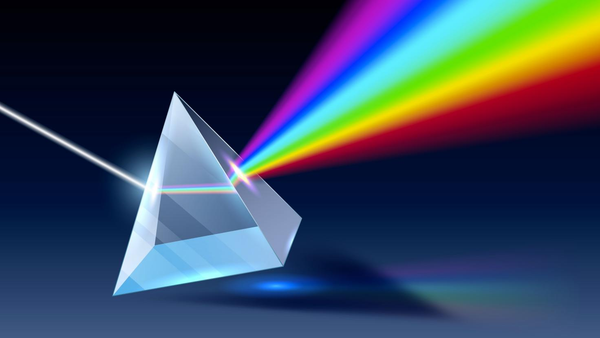How does refractometer work: the refraction theory between church windows and coffee
Who doesn’t know the feeling of entering a church and being struck by the beauty of church windows? Already 1500 years ago, Egyptian craftsmen added metal oxides to molten glass. By changing the refraction of the glass, the glass could emit the different parts of the sunlight each in a different color. The exact same mechanism can make coffee taste better! In order to see the connection between church window and coffee, let’s take a look at the way refraction works.
Refraction, refractive index and color
When you put a pencil in a glass of water and look at it from the side, you will notice that is looks bent. Why? Because of a phenomenon called refraction. Usually, we think of light as a straight ray, but when light is directed from one material into another (for example, from air into water), it bends. The angle of bending depends on the refractive index (RI) of the two materials. Different materials have different refractive indices, and different colors of light have different refractive indices in the same material.The refraction index number depends on the temperature and the size and number of molecules scattered in it. Suspended particles with different refractive indices are enclosed in the glass, these suspended particles will scatter the light waves in all directions. Like that, we can achieve the desired color.
Refractive index and coffee
When we talking about ’making coffee’, we are actually talking about extracting the molecules of aroma and flavor from coffee beam to water. (details of the extraction principle can be found at this link: https://handground.com/grind/an-intuitive-guide-to-coffee-solubles-extraction-and-tds). The size and number of flavor particles obtained from the extraction not only influences the flavor of the coffee, but also changes the refractive index of the coffee, just like the oxide particles in glass. This change is usually very small and cannot be directly determined by eyes. But with a refractometer, we can get the refractive index.
By measuring the change in refractive index, we can calculate the TDS value to help us make great tasting coffee. (If you want to learn more about the connection between TDS and great tasting coffee, you can click: 【What is TDS in Coffee and how to get?】.)
How does a refractometer work?
The refractive index of coffee is measured by placing a small sample of coffee on the prism of a refractometer. The refractometer shines light through the prism and onto the sample at different angles. When the irradiated light reaches a certain angle, it does not pass through the coffee, but is reflected back to the light sensor. This phenomenon is called "total internal reflection".


Once you know the refractive index, DiFluid's instrument and accompanying app will automatically help you calculate the TDS and extraction rate. Those two factors can tell you a lot about your coffee, brewing equipment, brewing methods, roasting and even technology. This is where the refractometer is incredibly valuable to coffee.
Best refractometer for coffee
The DiFluid Refractometer is a pocket-sized digital coffee refractometer. It can quickly and accurately measure the refractive index of a cup of coffee. Coffee lovers, cafe staff, and baristas can use it to automatically measure the TDS number . And they can also determine the extraction percentage by calculating TDS with the volume of water and weight of coffee power. DiFluid best refractometer for coffee works fast, convenient, and it is easy to use.
Simply place a few coffee drops in the sample tank and press the button. The microprocessor provides almost instantaneous readings of refractive index and TDS.
Unlike other similar instruments, this instrument can be calibrated automatically.
DiFluid digital refractometer covering a wide range of TDS 0-26%. Besides, DiFluid refractometer resolution is 0.01% and its accuracy is +/-0.03%. To make sure the readings accurate, DiFluid develop temperature compensation ATC aims, which can automatically impair the influence of temperature change. DiFluid refractometer with LCD display is easy to read in dark environment. Besides, the design is simple and easy to use, all of the control can be done by only one button. Since it is IP67 water resistance, you can safely wash it with water.

Now you have learnt what beautiful church windows have in common with delicious coffee! If you want to learn more interesting things about coffee, feel free to follow us on our website and on Facebook.
